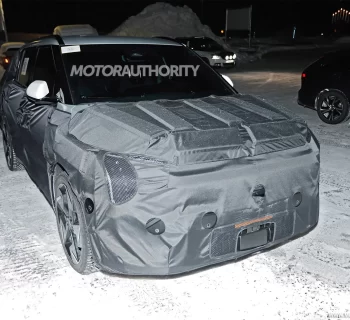- Does it make sense to go for a 350 kW DC fast charger when the Chevy Equinox EV can only accept 150 kW?
- Tom Moloughney tried three different fast chargers to see if it made a difference.
- Surprisingly, the 250 kW charger had the shortest charging session, not the 350 kW stall.
The Chevrolet Equinox EV offers a lot of bang for the buck, but it has a big drawback. Despite its high-voltage battery being described as a 400-volt pack, it’s actually under 300 V when the state of charge is low, and it never goes over 400 V even when it’s full. That’s for cell longevity, but it also means charging times are longer than what is expected of a modern EV.
Theoretically, the maximum charging speed is 150 kilowatts, but to reach that speed, the car needs to be hooked up to a DC fast charger that can provide at least 500 amps. And, as our charging expert Tom Moloughney shows in the video embedded below, even if a stall is rated for 150 kW, it doesn’t mean the Equinox EV will actually get that power.
The idea is simple: see how fast the Equinox EV can charge from 10% to 80% state of charge on three different DC fast chargers. A 150 kW Electrify America stall was compared to a 250 kW Tesla Supercharger dispenser and a 350 kW EVgo ultra-fast charger. Surprisingly, using the most powerful charger did not result in the shortest charging session.
Let’s start with the 150 kW Electrify America session. The stall can deliver a maximum of 350 amps, so to deliver the full power, it would have to up the voltage to 430 V. However, as we established earlier, the Equinox EV’s battery pack can’t reach 400 V and it needs 500 amps to go full-speed. Neither of these requirements was met by the EA charger, so the power level never went above 96 kW, leading to a 10% to 80% top-up in a very slow 44 minutes.
The 250 kW Tesla Supercharger was the fastest of the three, despite it being in the middle of the pack, power-wise. The Equinox EV maintained over 100 kW longer than the 350 kW EVgo charger, leading to a total charging time of 40 minutes. Meanwhile, the EVgo stall started throttling the power after 14 minutes of charging and dropped under 100 kW after roughly 16 minutes. In the end, the 350 kW station needed one more minute compared to the 250 kW Tesla Supercharger to get the battery up to 80%.
In the case of the Equinox EV, it makes sense to go for DC fast chargers that offer over 200 kW simply because a higher amperage is needed to take full advantage of the car’s capabilities. That said, the differences between 150 kW, 250 kW and 350 kW DC fast chargers are quite small in terms of charging times—just five minutes between the slowest and the fastest.
Source link
Discover more from Autojunction
Subscribe to get the latest posts sent to your email.





